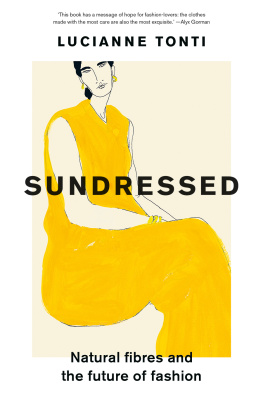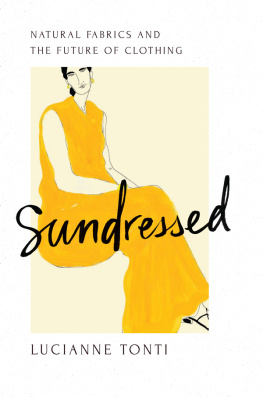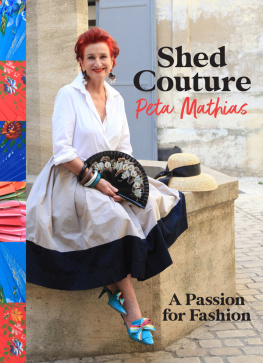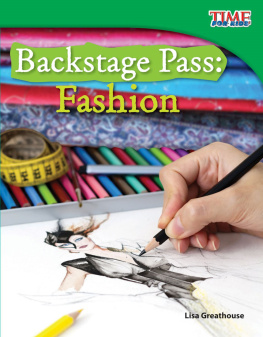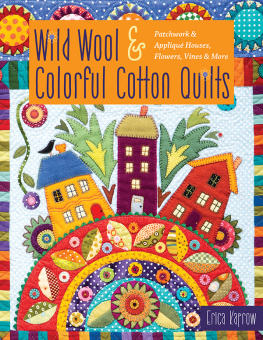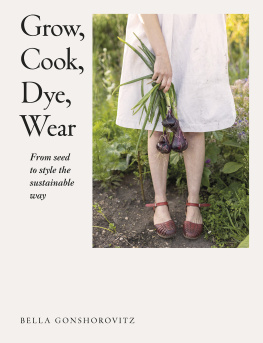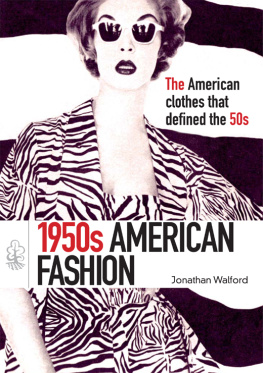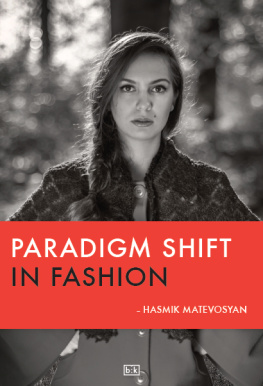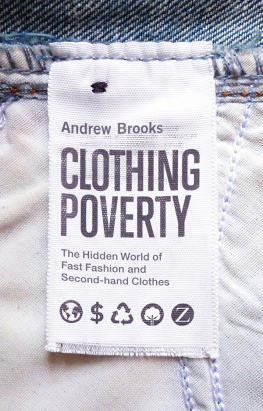Published by Black Inc.,
an imprint of Schwartz Books Pty Ltd
2224 Northumberland Street
Collingwood VIC 3066, Australia
www.blackincbooks.com
Copyright Lucianne Tonti 2022
Lucianne Tonti asserts her right to be known as the author of this work.
ALL RIGHTS RESERVED.
No part of this publication may be reproduced, stored in a retrieval system, or transmitted in any form by any means electronic, mechanical, photocopying, recording or otherwise without the prior consent of the publishers.
9781760643164 (paperback)
9781743822494 (ebook)

Cover design by Akiko Chan
Text design by Akiko Chan
Typesetting by Typography Studio
Cover artwork by Rosie McGuinness
Author photo by Jesus Manongdo
For my dad
Introduction
I LOVE MY CLOTHES. Its what I say any time someone tells me they dont want to be seen in the same thing twice. I love my clothes. On a good day they make me feel beautiful. On a bad day, at the very least they help me feel composed.
I love the way a pair of pants can feel empowering. I love the way a mid-length skirt with a split feels when I walk, I love the flash of leg from a certain angle on the street or sitting in a chair. I love the way a well-tailored suit provides balance across the shoulders, through the waist, hips and sleeves. I love styling: the right coat with the right dress. Something sexy with something boyish. Something pretty with something tough. I love the softness of silk layered with the softness of cashmere. The crispness of a good cotton shirt against a pair of jeans. I love throwing an oversized coat over athletic gear, a cocktail dress, pyjamas. I love the theatre of dressing, the play of it. The way an outfit can make a night feel exciting. The way an outfit adds colour to memories, to the energy of a moment, to how it felt on that street corner, in that restaurant, at that hotel bar.
Im not interested in clothes I can only wear once. I want clothes to carry me through the seasons of a year, of my life. I want clothes that see me through job interviews, the end of relationships that never even began, dinner parties with new friends, birthdays with old friends, weddings, funerals, dancing. Our clothes are some of our most intimate companions: how do you get to know them if you only wear them once?
How do you know that a particular jacket will get too hot if the sun comes out? Or that the rub of that waistline will be uncomfortable through a long dinner? How do you know that a dress will make you feel so wonderful you dont have to think about it, aside from when youre receiving compliments? How do you know that putting things in certain pockets will upset the line of the hip, so you do need to carry a bag? Or in that knit dress, you can get away with not taking a jacket. And in that skirt, you can walk fast, but you cant run. That those shoes hurt when youre dancing. That those pants will crease if you sit down for too long. That you can rescue your white blouse from red wine because its been spilt on before. That while you can zip yourself into the bodysuit, you need a friend to help take it off. How do you know which dresses, shirts and pants are comfortable enough, beautiful enough and resilient enough to see you through an entire day, from meetings to dinner?
A world where you dont know your clothes sounds awfully risky. It sounds like a recipe for days with itchy necklines, clammy armpits and having to carry your too-warm jacket. And of course, its risky for the planet too, although risky is an understatement. A world where we dont know our clothes, where we wear them a handful of times before we throw them away, is more than risky. Its disastrous.
Fashions carbon footprint and environmental offences have been thoroughly documented by academics, reported on by the biggest management consulting companies in the world and investigated by very talented journalists. The latest reports suggest fashion is responsible for 2 per cent of global greenhouse gas emissions, although some estimates place it as high as 10 per cent, not to mention the pollution of waterways, the harm to workers along its supply chains and the insurmountable levels of textile waste generated every second by clothes we have thrown away or donated to charity. The clothes we never got to know. The clothes we didnt fall in love with.
For several years now, the fashion industry has been on a mission to become more sustainable or at least to convince people that it is. The use of the word sustainable and its counterparts conscious, eco, natural, positive impact, zero waste have become so ubiquitous, so overused in PR and marketing campaigns, that they have come to lose their meaning. Or in fact, their meaning is so deliberately vague that the truth about a garments impact is successfully obscured.
Thats not to say there arent innovations. Sustainable solutions are arriving hard and fast: biological and technical inventions; recycling; renewable technologies; closed-loop production systems that recycle water and chemicals; waste management and circularity; increased transparency to allow for greater traceability, visibility and accountability. The pace is exciting, but that list is exhausting not least because scratching the surface of most of these solutions can prove extremely unsatisfying. Transparency is no good without standardised language and proper accountability. Closed-loop production can refer to just one part of the production process. Circularity and recycling technology is in its infancy: without large-scale infrastructure to capture, sort and process textile waste, most garments will not be recycled and by most, I mean 99 per cent, no matter what the PR copy claims.
Aside from this, it is impossible for the fashion industry to reduce its carbon emissions while rates of consumption and production continue to climb, and despite the posturing and the summits, the voluntary codes of conduct and the coalitions, neither show any sign of slowing down. At least not while current systems and thinking remain in place. Its not just the industry that needs to change. Our understanding of clothes needs to change too. We have lost sight of the origins of these garments and materials that have kept us warm and made us feel beautiful for centuries. We have lost sight of the people who make them, who have the knowledge and skill to pleat, stitch and tailor. Production was outsourced decades ago, prices dropped, marketing infiltrated our lives and the amount of clothes we bought increased some estimates suggest by double.
Thats all without considering that polyester, a plastic made from fossil fuels, represented 52 per cent of the global fibre market in 2020. And it has somehow received such great publicity that writers of life-cycle assessments are convinced it is one of the most sustainable materials, because they classify it a by-product of fossil fuels. The logic of this is so skewed its hard to believe, especially since for the last decade we have been denouncing plastic for clogging up oceans and strangling fish. Polyester sheds microfibres of plastic pollution into waterways every time its washed microfibres that end up in the bellies of sea creatures and in our soils and the implementation of technology to prevent this is extremely slow. Right now, anything labelled recycled polyester is actually just downcycled plastic, so degraded that its next stop is landfill.
And besides, polyester is uncomfortable. It has a complicated relationship with oil, by which I mean it attracts it, absorbs it and wont let it go. It also has a complicated relationship with sweat and body odour, for much the same reason that is to say, polyester smells, and that smell is impossible to wash away. Polyester is a plastic, made from a finite resource; it will never biodegrade. We shouldnt be wearing it. It doesnt belong against our skin. But my clothes that are made of natural fibres cotton, linen, silk or wool I would take them with me to the ends of the earth.

